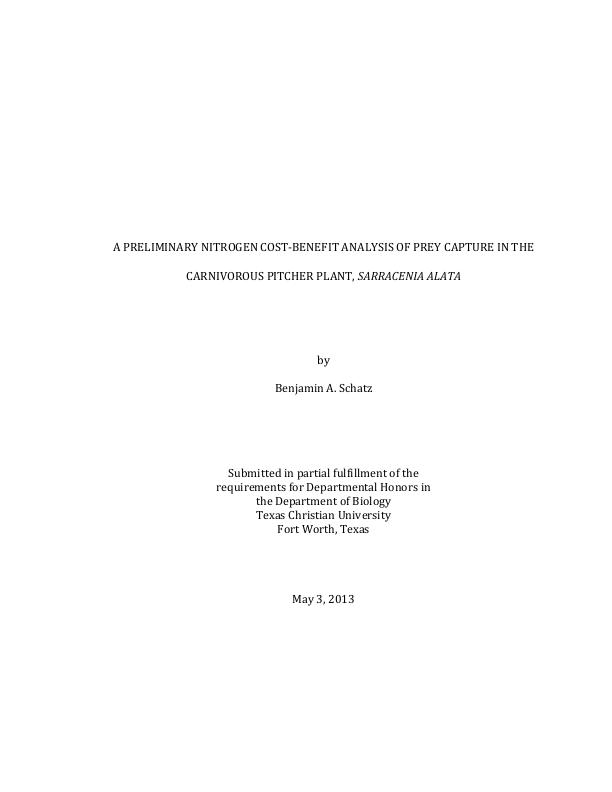A Preliminary Nitrogen Cost-Benefit Analysis of Prey Capture in the Carnivorous Pitcher Plant, Sarracenia alataShow full item record
| Title | A Preliminary Nitrogen Cost-Benefit Analysis of Prey Capture in the Carnivorous Pitcher Plant, Sarracenia alata |
|---|---|
| Author | Schatz, Ben |
| Date | 2013 |
| Abstract | For a trait to be evolutionarily advantageous, in theory, the benefit from the trait must outweigh the cost. Sarracenia alata is a carnivorous pitcher plant that grows in nitrogen-poor soil and supplements the low quantity of nitrogen (N) acquired from the soil with N absorbed from insect capture. The purpose of this study was to determine whether pitchers (the insect traps) gain sufficient N from insect capture to offset the N cost of pitcher construction. Nitrogen cost was estimated two ways, N content of mature pitchers and N content after translocation (the removal of nutrients during senescence). Benefit was estimated by measuring the total N in captured prey. There was no significant difference between the total N content of mature pitcher tissue, which averaged 2.61mg + 0.42 (mean + SE), and the cumulative N in prey capture, which averaged 1.75mg + 0.89. Therefore, the pitchers capture barely enough N to offset the N construction of a mature pitcher. Pitcher plants can translocate N to rhizomes for use in subsequent growing seasons. Total N remaining in pitchers after translocation represents the quantity of N that cannot be recovered, and therefore the N deficit after building the pitcher. The total N in pitchers after translocation averaged 0.002mg + 0.0004. Therefore, prey capture provided up to 875 times the amount of N that could not be recovered from the pitchers by translocation. |
| Link | https://repository.tcu.edu/handle/116099117/7200 |
| Department | Biology |
| Advisor | Horner, John |
| Additional Date(s) | 2013-05-03 |
Files in this item
This item appears in the following Collection(s)
- Undergraduate Honors Papers [1362]
© TCU Library 2015 | Contact Special Collections |
HTML Sitemap



